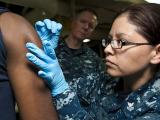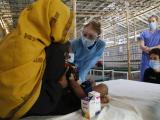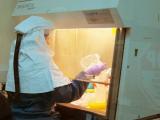Mar 29, 2012
Epidemiologist workforce mostly weathered economic downturn
A 2010 Internet survey designed to measure the impact of state and federal budget problems on the number of epidemiologists working in state and local health departments found a nearly 13% increase since 2009 in those working at the state level. It did, however, find decreases in several states and in some program areas. The findings, from the Council of State and Territorial Epidemiologists (CSTE), appeared today in Morbidity and Mortality Weekly Report (MMWR). Unlike past surveys, this one measured the number of epidemiologists working in local health departments, a group that made up about a third of 3,754 total employees. The authors said the rise in epidemiologists was unexpected given the economic downturn. They noted that federal funding, especially money targeted to 2009 H1N1 pandemic response and preventing healthcare-acquired infections, probably helped offset losses in state funding. Of 51 jurisdictions, 12
(24%) reported 10% or greater decreases in the number of state-level epidemiologists. Program areas that saw increases included infectious diseases, "other", and chronic diseases, and those incurring losses included bioterrorism and emergency response, environmental health, and oral health.
Mar 29 MMWR report
Four states report unusual HFMD cases
The US Centers for Disease Control and Prevention (CDC) today reported unusual outbreaks of hand, foot, and mouth disease (HFMD) in four states that were caused by a type of enterovirus known to cause a more extensive rash. The report, by health officials working in several jurisdictions where the cases were reported, appeared today in MMWR. The CDC said it received reports of 63 cases of HFMD from Alabama (38), California (7), Connecticut (1), and Nevada (17) between Nov 11, 2011, and Feb 29, 2012, which differs from the typical summer and autumn season for the disease. Clinical specimens were available in 34 of the cases, and coxsackievirus A6 (CVA6), a type not commonly found in the United States, was detected in 25 of the samples. Though 40 of the 63 patients were age 2 or younger, 15 were adults, an age-group not typically sickened by HFMD. About half of the adults who had HMFD had links to children in childcare settings where HFMD was
reported. The CDC said that although CVA6 outbreaks have been linked internationally to outbreaks in children and adults, no US cases have been identified. The agency said it continues to receive CVA6-associated HFMD reports.
Mar 29 MMWR report



















